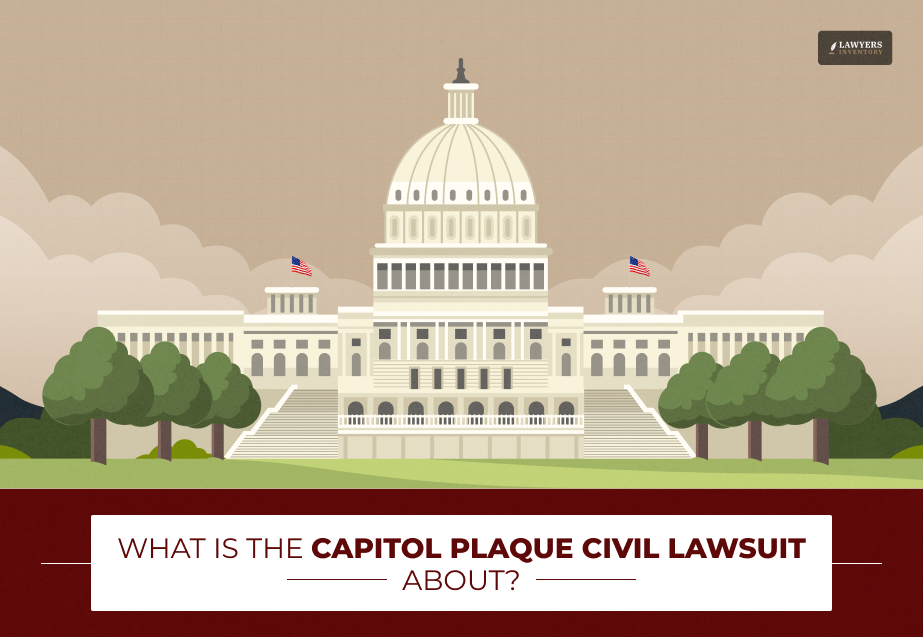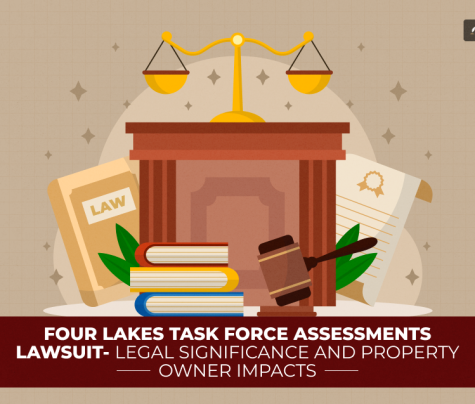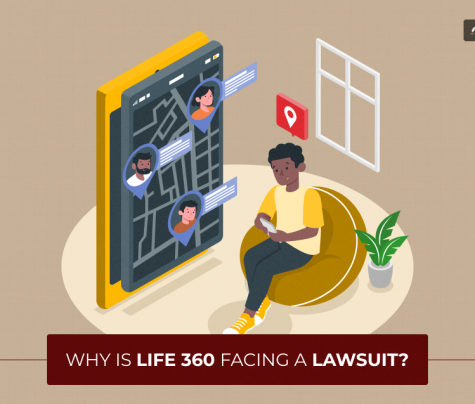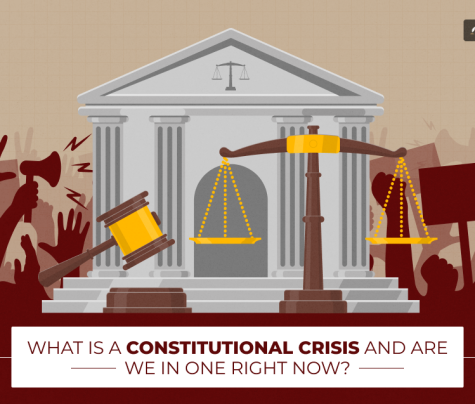
The Capitol Plaque civil lawsuit has become a significant case in Texas, drawing national attention. At the heart of the matter is a plaque displayed inside the Texas State Capitol—the “Children of the Confederacy Creed Plaque”—which has been criticized for whitewashing history and glorifying the Confederacy.
The lawsuit highlights a bigger legal and cultural conflict: Should states preserve such markers for their historical value, or remove them due to their harmful symbolism? It raises issues of government speech, racial equality, historical accuracy, and public accountability.
In this article, I will talk about the following things:
- What is the Capitol Plaque?
- About the Capitol Plaque Lawsuit.
- The major allegations in the lawsuit.
- How did the State respond to the claims?
- Impact of the Capitol Plaque Civil Lawsuit on the people.
Therefore, if these are some of the things that you want to know, keep on reading this blog till the end…
What Is the Capitol Plaque?

Installed in 1959, the plaque was sponsored by the Children of the Confederacy, a heritage group tied to the United Daughters of the Confederacy.
The inscription falsely claims that the Civil War was not fought over slavery, aligning with the “Lost Cause” narrative that emerged in the early 20th century. It sits in a prominent location in the Texas State Capitol building, seen by lawmakers, staff, and visitors.
But why does it really matter? Well, here’s what you need to know:
- Erected during the Civil Rights Movement, the plaque reflected pushback against desegregation.
- Critics argue it erases the role of slavery in American history and promotes racist ideology.
- Supporters argue it represents heritage and historical identity.
How Did The Capitol Plaque Lawsuit Start?
Initially, in 2019, Texas House Speaker Dennis Bonnen ordered the plaque removed, sparking backlash from heritage groups.
Two policemen working the Jan. 6, 2021, assault at the U.S. Capitol by the partisans of U.S. President Donald Trump have brought a suit against the federal officials, stating that the government has declined to install a memorial mandated by the federal government for the officers who battled the iconic building.
According to the official complaint submitted to the federal court in Washington, it is alleged that the Capitol administration and maintenance agency were in breach of a statute that required the installation of a memorial recognizing the heroic actions of law enforcement on January 6.
Lawsuits emerged from organizations claiming removal violated state heritage laws and from civil rights advocates claiming the continued display violated constitutional rights.
While a 2022 law mandated the installation of the plaque, AP News reports that “Architect of the Capitol Thomas Austin told a House subcommittee that House Speaker Mike Johnson, a Louisiana Republican, had not instructed him to install the plaque.”
The civil lawsuit has since evolved, focusing on: (a) Who has authority to decide what stays or goes inside the Capitol, (b) Whether the plaque’s content violates constitutional protections.
In other words, the lawsuit stems from efforts to remove the plaque and disputes over who has the authority to decide its fate.
| Year | Event | Key Players |
| 1959 | Plaque installed at Texas Capitol | Children of the Confederacy |
| 2018 | Lawmakers & activists demand removal | Rep. Eric Johnson (now Dallas Mayor) |
| 2019 | Texas House Speaker Dennis Bonnen orders removal | Texas Preservation Board |
| 2019 | Lawsuits filed challenging removal and continued display | Heritage groups & civil rights activists |
| 2023–2025 | Ongoing litigation over constitutionality & state authority | State of Texas, plaintiffs |
What Are The Key Allegations In The Capitol Plaque Lawsuit?

According to CBS News, the Capitol Plaque lawsuit “argues the failure to hang the plaque violates the Equal Protection clause of the Constitution. It also contends the Aarchitect of the Capitol, who helps manage the facilities and grounds of the Capitol, has failed to complete a required duty under the 2022 law.”
Here are some of the major allegations and legal issues of the lawsuit that you should know about:
1. Historical Inaccuracy & Misleading Practices
Firstly, the plaque denies slavery’s role in the Civil War, despite overwhelming historical evidence. According to the American Historical Association (2019), historians argue that this falsifies state-endorsed history.
2. Equal Protection Concerns
Secondly, civil rights groups claim the plaque creates a hostile racial environment inside the Capitol, violating the 14th Amendment.
3. Government Speech Issue
Thirdly, the case raises whether the plaque represents private heritage expression or official state endorsement. As per Pleasant Grove City v. Summum, 555 U.S. 460 (2009), courts typically rule that plaques in public buildings constitute government speech, meaning states have the authority to regulate or remove them.
4. Impact On Minors & Public Visitors
Finally, children visiting the Capitol are exposed to misleading historical narratives. Lawmakers argue this educational distortion is harmful.
Timeline of Events In The Capitol Plaque Lawsuit

How Did The Capitol Plaque Lawsuit Impact The Communities & Visitors?
When it comes to the impact of the lawsuit, there are a few things that you should know. For instance, here’s how it impacted the communities:
- African American visitors and lawmakers claim the plaque undermines their dignity and perpetuates racist narratives.
- Heritage groups argue that removal erases their cultural identity.
- General public controversy reflects wider debates about monuments, flags, and public commemoration.
Take a quick look at this table to get a better idea:
| Stakeholder | Perspective | Concerns |
| African American lawmakers & visitors | Plaque is offensive & inaccurate | Creates a hostile environment |
| Heritage groups | See plaque as part of cultural memory | Fear erasure of history |
| General public | Divided between “heritage vs hate” debate | Questions about what history belongs in public spaces |
| Students & educators | Use Capitol tours as history lessons | Risk of misinformation |
What Is The State’s Response To The Capitol Plaque Lawsuit?
The Texas Legislature and State Preservation Board have issued mixed responses. For instance, the officials argue they have the legal authority to remove historically inaccurate plaques.
According to the Texas Tribune (2019, the Texas House Speaker (2019) ordered the plaque removed, stating: “It is inaccurate. It is wrong. And it has no place in the Texas Capitol.”
The State Preservation Board debated whether it had legal authority to remove historical plaques. Heritage groups filed lawsuits claiming removal violated heritage protection laws.
At present, no final settlement has been reached as litigation continues.
Read Also: How Long Does a Civil Lawsuit Take to Settle in the USA?
What Should Citizens Know?
As courts, legislators, and communities weigh in, one question remains central: How do we balance preserving history with building an inclusive future?
Here are a few things that people should know or do:
- Stay informed: Lawsuits like this can take years.
- Public input matters: Community voices and advocacy often push legislatures to act faster than courts.
- Educational opportunity: This is a chance to revisit how history is taught and remembered.
The Capitol Plaque civil lawsuit is more than a dispute over a piece of metal on a wall—it reflects the larger national reckoning with history, race, and memory. Whether the plaque stays or goes, the lawsuit underscores how symbols in public spaces carry powerful legal and cultural weight.
Read Also: What Is The TaxRise Lawsuit About And What Should You Keep In Mind?
What Are The Broader Implications Of This Lawsuit?
- For Texas: Will set precedent for handling other controversial Capitol markers.
- For the U.S.: Adds to national debates about Confederate monuments, flags, and markers.
- For law: Clarifies how the Government Speech Doctrine applies to historical displays.
The Capitol Plaque civil lawsuit is more than a fight over one plaque. It reflects the larger struggle between preserving heritage and confronting historical truths.
As courts continue to weigh the case, Texans—and Americans—are forced to grapple with a critical question: How should we honor history while ensuring inclusivity and accuracy in public spaces?
The outcome may not only decide the future of one plaque but could also shape how states nationwide handle controversial historical symbols.











0 Reply
No comments yet.